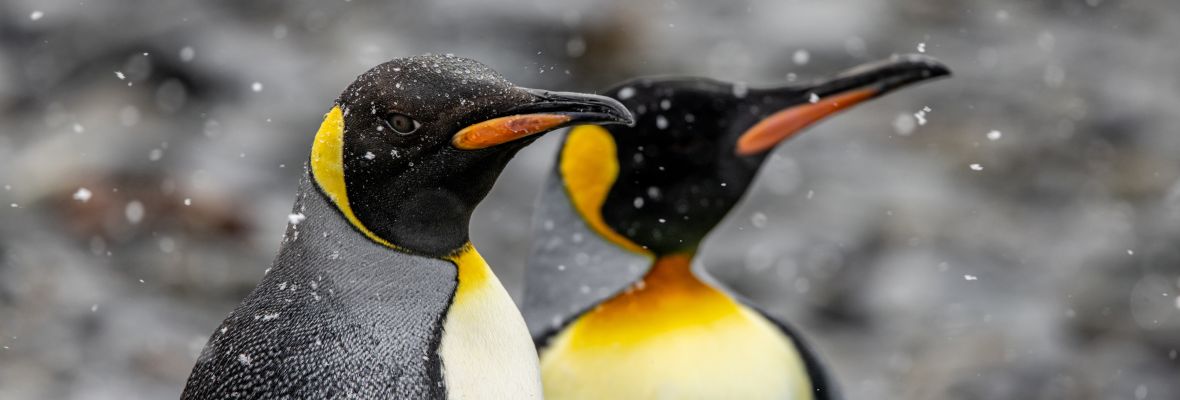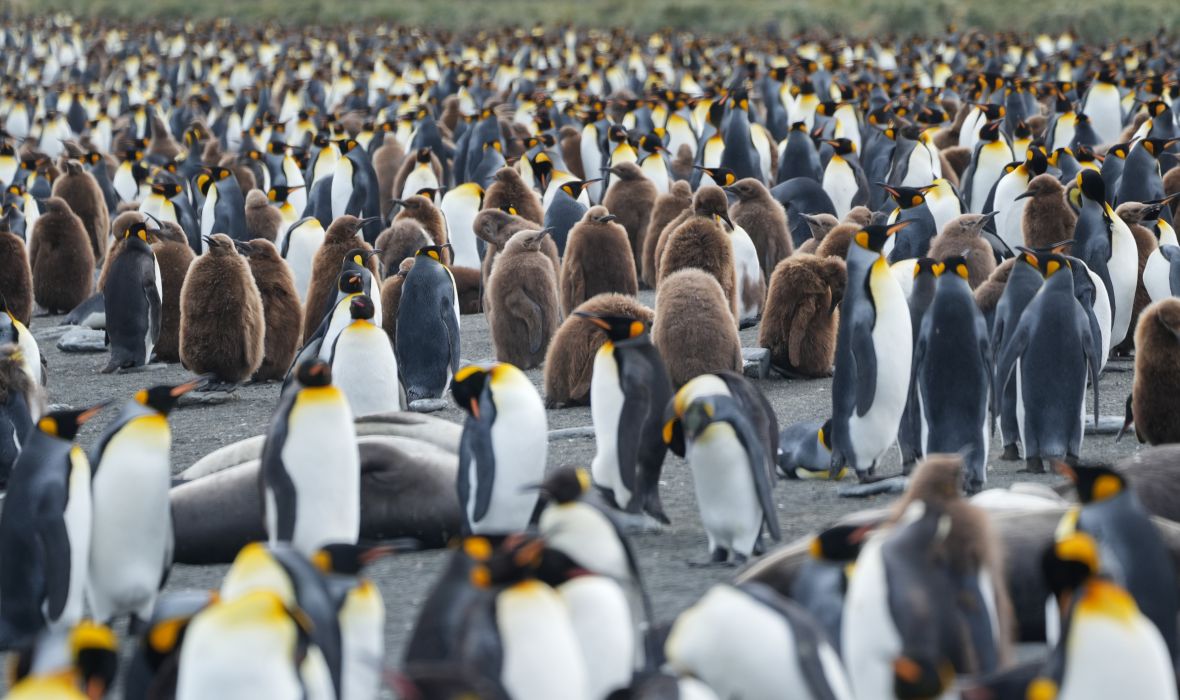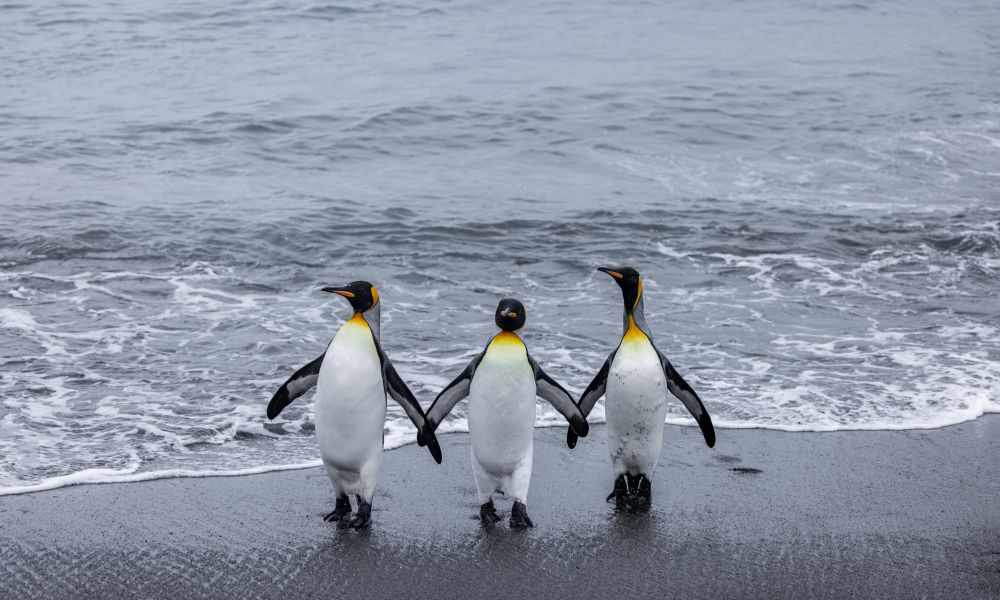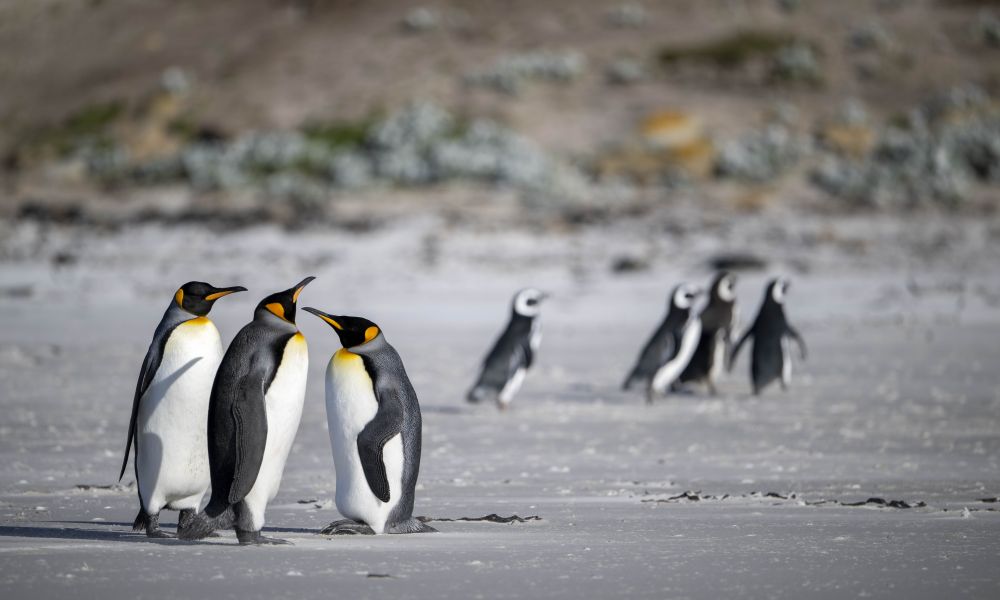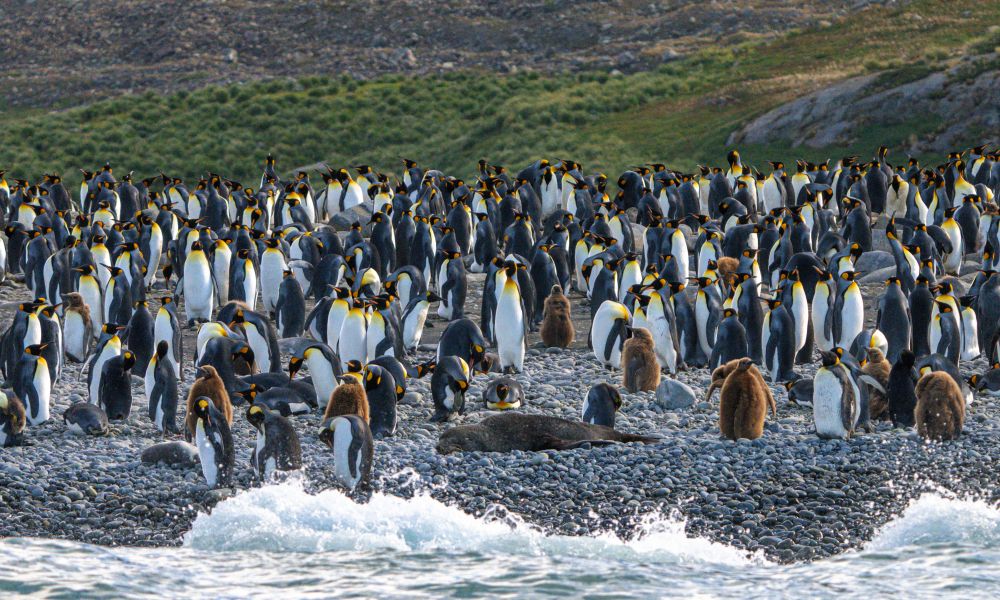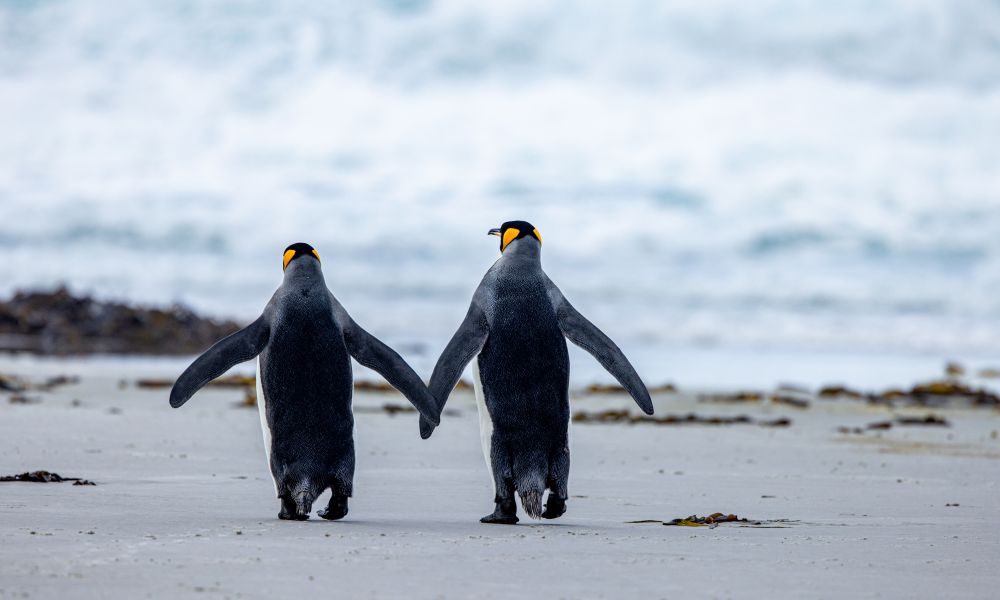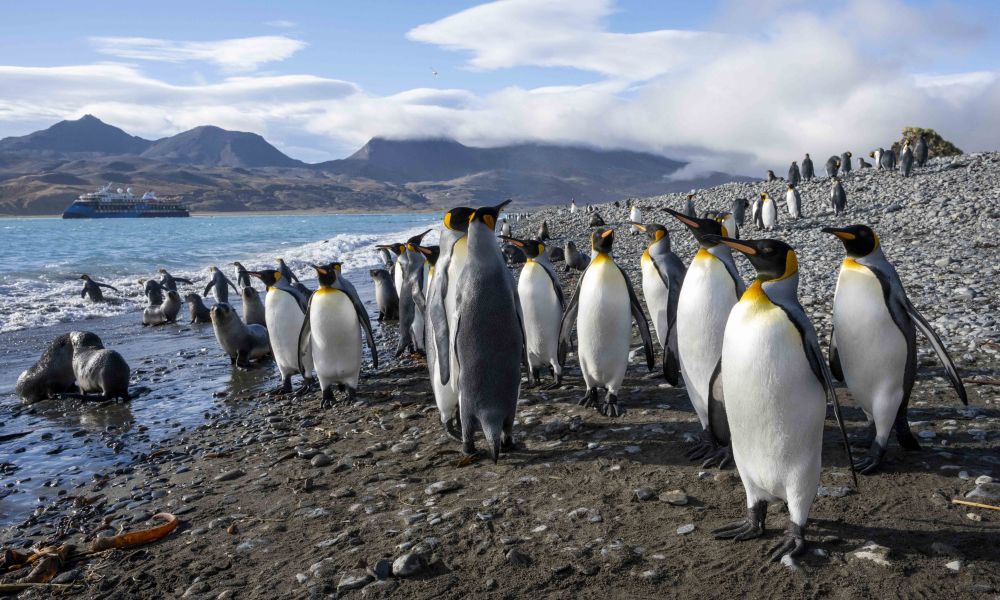How big is a king penguin?
Adult king penguins weigh between 9–18 kg (20–40 lbs) with males being slightly heavier than females. Regarding baby king penguins, they typically weigh less than 500 grams.
What does a king penguin look like?
This sub-Antarctic seabird has a black-and-white body and bright orange-yellow colouring on its neck, beak, and chest. Furthermore, one of the most unique king penguin characteristics is that their chicks are usually brown, fuzzy and similar in size, with the possibility of appearing larger at times due to their feathers. This made early explorers think that they were actually a different species.
Why are king penguin chicks so big and brown?
Their chick looks so different that they are often mistaken for a different species. However, the explanation for this distinctive difference is that their large size helps them store fat during the cold Antarctic months when food is scarce. Additionally, the king penguin brown plumage color, which is very visible and different from when they are mature, is used for insulation during their development.
What does a king penguin eat?
The king penguin's diet mainly consists of small fish, unlike other penguin species that mostly feed on krill. They are also known to eat squid. These penguins spend a lot of time in the ocean feeding, and they can dive down to great depths in search of food. They can also remain underwater for up to 10 minutes.
Where does the king penguin live?
The king penguin habitats are mainly the northern sub-Antarctic islands, with the largest population on Crozet Island (nearly half a million pairs), as well as on the Prince Edward Islands, Kerguelen Islands, and South Georgia Island. They are also seen as far north as the southern tip of South America, the Falkland Islands, and New Zealand.
How is their breeding?
Breeding is preceded by a moult, during which the penguins shed their old feathers, which are replaced by new ones. Unlike other penguin species, the King Penguin does not build a nest; instead, they carry their eggs on their feet, covered by a flap of skin called a brood patch.
How tall is a king penguin?
An adult king penguin height is usually of 90 and 100 cm tall (35-39 inches). This is a considerable size and nearly rivals the tallest species, which is the emperor penguin. This makes them the second-largest species.
How long does a king penguin live?
King penguin lifespan is usually around 15-20 years.
Are they monogamous?
King Penguins are monogamous and mate with only one partner each season. The pairs work together to hatch their eggs and care for their chicks. These penguins mate when they return from their hunting grounds to moult their feathers. Males utilise a combination of vocalisations and visual displays to court a female. The pair take turns keeping their chick warm and fed; while one sits with the chick, the other goes off to hunt. They switch roles roughly every week.



